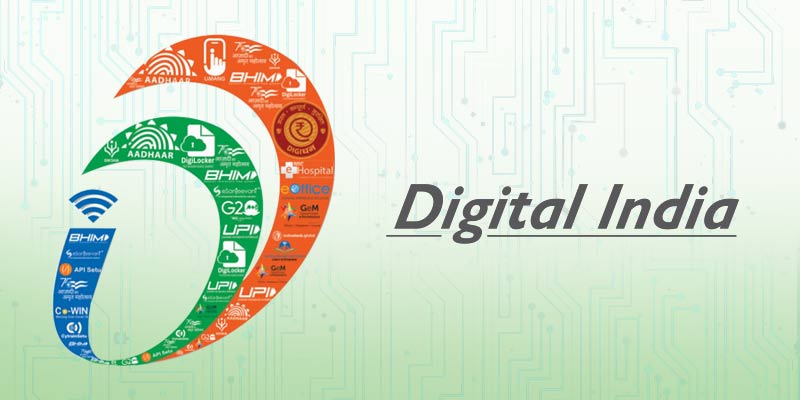- India
- Jul 02
- Kevin Savio Antony
Explainer - Nine years of Digital India
Prime Minister Narendra Modi lauded the successful completion of nine years of Digital India.
He said that Digital India symbolises an empowered India which boosts Ease of Living and transparency.
What is Digital India?
• Digital India, a flagship programme of the government of India, aims to transform India into a digitally empowered society and knowledge economy.
• It weaves together a large number of ideas and thoughts into a single comprehensive vision so that each of them is seen as part of a larger goal.
• The programme was launched on July 1, 2015.
• It targets to provide digital services, digital access, bridge the digital divide, language divide and thereby, ensure digital inclusion, financial inclusion, and digital empowerment.
• Digital India is an umbrella programme that covers multiple ministries and departments.
• The targets are sought to be achieved with the power of technology that is affordable, developmental, sustainable, and inclusive.
The programme is centered on three key vision areas:
i) Vision Area 1 - Digital Infrastructure as a Utility to Every Citizen
• High speed internet as a core utility.
• Cradle to grave digital identity — unique, lifelong, online, authenticable.
• Mobile phone and bank account enabling participation in digital & financial space.
• Easy access to a Common Service Centre.
• Shareable private space on a public cloud.
• Safe and secure cyberspace.
ii) Vision Area 2: Governance & Services on Demand
• Seamlessly integrated across departments or jurisdictions.
• Services available in real time from online & mobile platform.
• All citizen entitlements to be available on the cloud.
• Services digitally transformed for improving Ease of Doing Business.
• Making financial transactions electronic & cashless.
• Leveraging Geographic Information System (GIS) for decision support systems and development.
iii) Vision Area 3 : Digital Empowerment of Citizens
• Universal digital literacy.
• Universally accessible digital resources.
• All documents/ certificates to be available on cloud.
• Availability of digital resources/services in Indian languages.
• Collaborative digital platforms for participative governance.
• Portability of all entitlements through cloud.
Pillars of Digital India
To ensure focus on each of the above vision areas and implementation in a time bound manner, nine pillars along with digital initiatives were identified under the Digital India programme.
They are:
i) Broadband Highways
ii) Universal access to mobile connectivity
iii) Public internet access programme
iv) e-Governance – Reforming government through technology
v) e-Kranti – Electronic delivery of services
vi) Information for All
vii) Electronics Manufacturing – Target net zero imports
viii) IT for jobs
ix) Early harvest programmes.
Impact of Digital India
• Digital India Programme has resulted in a paradigm shift towards digitisation and e-governance in India.
• It has reduced the distance between government and citizens significantly.
• It has also helped in delivery of substantial services directly to the beneficiary in a transparent and corruption-free manner.
• Digital India proved its resilience during the pandemic and has laid the foundation for adoption of digital initiatives has accelerated in an unprecedented manner.
• Information and Communications Technology (ICT) emerged as a key means of resolving challenges caused by the pandemic and Digital India initiatives have served the people, businesses, and government in those tough times.
Some of the key initiatives undertaken under Digital India programme across the country are:
• Aadhaar: Aadhaar provides 12 digit biometric and demographic based identity that is unique, lifelong, online and authenticable.
• Common Services Centres: CSCs are offering government and business services in digital mode in rural areas through Village Level Entrepreneurs (VLEs). Over 400 digital services are being offered by these CSCs. Around 5.31 Lakh CSCs are functional (including urban & rural areas) across the country, out of which, 4.20 lakh CSCs are functional at Gram Panchayat-level.
• Unified Mobile Application for New-age Governance (UMANG): It is for providing government services to citizens through mobile. More than 1,700 government services and over 22,000 bill payment services are made available at UMANG.
• DigiLocker: It is facilitating paperless availability of public documents. DigLocker has more than 13.7 crore users and more than 562 crore documents are made available through DigiLocker from 2,311 issuer organisations.
• Online e-Sign (e-Hastakshar): e-Sign is an online electronic signature service, which can be integrated with service delivery applications via an Application Programming Interface (API) to facilitate an e-Sign user to digitally sign a document. Using authentication of the Aadhaar holder through Aadhaar e-KYC service, online electronic signature service is facilitated.
• Unified Payment Interface (UPI): It is the leading digital payment platform. It is integrated with 598 banks. For the first time, UPI transactions crossed 100 billion in the financial year 2023-24 and closed at 131 billion, compared to 84 billion in 2022-23.
• MyGov: It is a citizen engagement platform that is developed to facilitate participatory governance. More than 2.76 crore users are actively using MyGov.
• MeriPehchaan: National single sign-on platform called MeriPehchaan has been launched in July 2022 to facilitate/provide citizens ease of access to government portals.
(The author is a trainer for Civil Services aspirants.)

